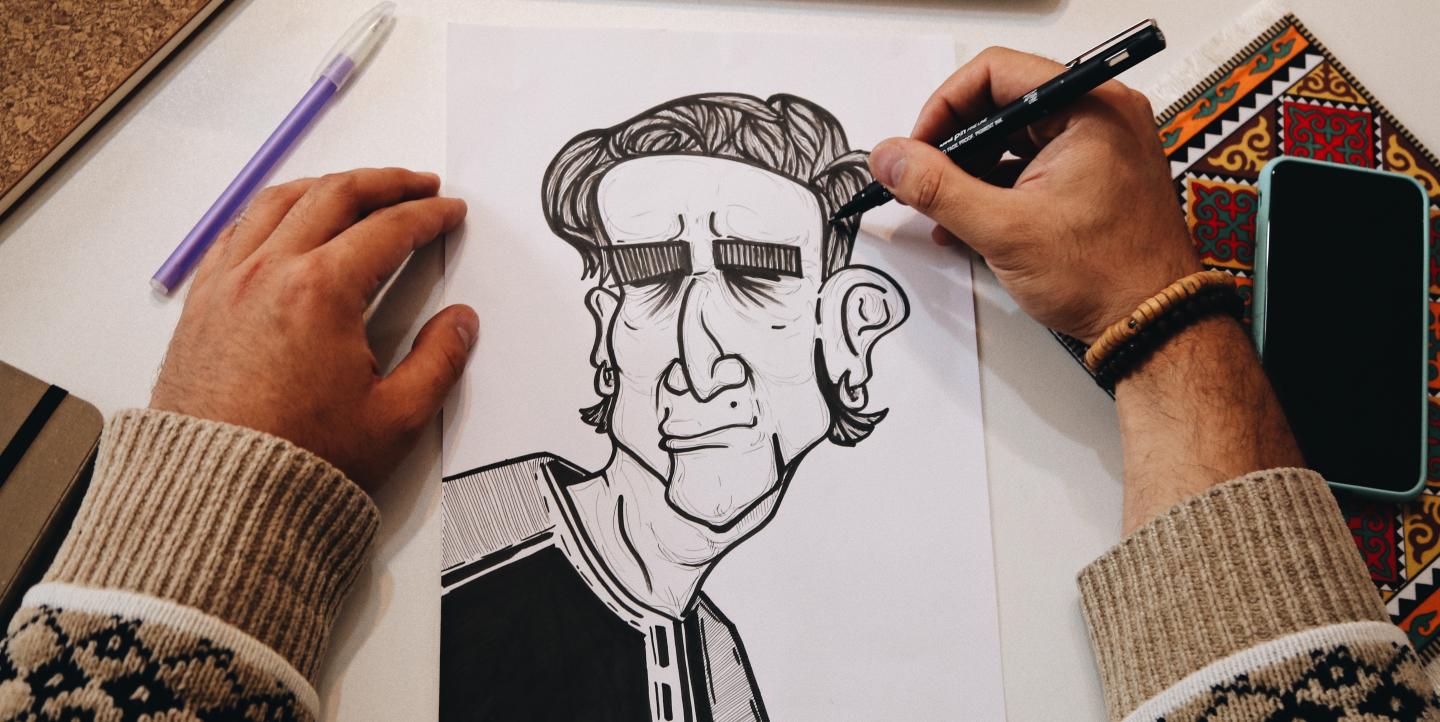From overwhelming statistics to devastating headlines, many reporters have faced burnout from the stress of reporting on COVID-19. Among the many forms of media that journalists have produced during the pandemic, however, one comes as a source of relief and, at times, even humor: editorial cartoons.
ICFJ Global Health Crisis Reporting Forum Community Manager Paul Adepoju sat down with Mike Asukwo, an award-winning cartoonist from Nigeria and the head of graphics for Business Day, to discuss the role of cartoons in storytelling and reporting on the pandemic. Asukwo is known for his thought-provoking and humorous work, often tackling socio-political issues and narratives about the Nigerian government.
“A cartoon is a very strong source of information,” Asukwo said. “We tend to forget a lot of things that happen around us, but once [drawn] in a cartoon it stays in our memory because of the imagery chosen, the elements used and the medium that is used to present the cartoons.”
According to Asukwo, cartoons can be interpretative, analytical, entertaining and even prophetic, depending on the themes portrayed. Here are some tips for aspiring cartoonists:
Mold your creative process
(1) Pick your subject matter
Before starting the process of creating an image, decide what the focus of your cartoon will be.
“The first thing I ask myself is, what am I going to talk about today?” Asukwo said. “What are the issues — not what is trendy — but what are the issues that affect me most, or in regards to the public?”
(2) Choose a perspective
Once there is a chosen subject matter, Asukwo determines the point of view of his graphic. When deciding this, consider how people currently feel about your topic, and its future significance.
There is no guarantee that the public will interpret a cartoon the way the artist intended. However, the artist does get to decide what visuals they put out into the world, and how. Similar to when photojournalists choose specific angles, lighting and depth for their work, cartoonists must choose the angle they will take for their image, and how they translate that.
(3) Pick up a pencil
With the subject matter and perspective in mind, zero in on the physical imagery and explore different ways you might create your graphic. It is easier to create a final product if there are multiple sketches to choose from.
[Read more: How do journalists find their story ideas]
How to frame a cartoon
No matter how trendy an idea or issue might be, it is important for the cartoonist to do their own research and find out the “what” and “how” behind a source of information. They should then frame their message accordingly.
Cartoonists have a responsibility to convey information to the public through their visuals, and avoid spreading misinformation. Cartoons can be stand-alone works or tied into bigger news stories; it’s important to consider the context of these stories and fact-check them.
“Sometimes you might make a mistake because there is so much misinformation. There's so much fake news out there and some that look very genuine … so be careful,” Asukwo said.
Be cognizant of bias
The very act of choosing the subject matter as an artist and reporter means taking a side. “A cartoon stems from the opinion of an artist,” Asukwo said. “You have to come in from a particular angle to the story. That angle you choose is an angle that you have to be comfortable with. You have done your research, you know how it affected the audience, you know how it affects your reader. You made that decision, so you're already biased in a way.”
The imagery that a cartoonist creates also should align with the message they want to convey. If an image portrays a negative message, the artist might stay away from elements like brighter colors and excited dialogue to prevent ambiguity.
Cartoons can be used as tools for advocacy, and a good cartoonist will know when to use this tool. There is no way to wholly erase human bias, but the best approach to creating any cartoon is to stay well-informed before illustrating any information for the public.
[Read more: 7 photo editing apps for mobile journalists]
Tools for drawing
The three key elements of a successful cartoonist are passion, artistic ability and technical skill, said Asukwo.
Cartoons can be drawn entirely by hand or by using a tablet device. Asukwo’s work is typically 30% manual and 70% digital, he estimated, often starting as sketches that are later scanned and uploaded to a computer and edited with software.
iPhones allow users to scan images through the notes app and turn them into digital versions. Programs like Adobe Photoshop or Adobe Illustrator offer tools to manipulate images. Illustrator manipulates vector images, which is what usually creates the clean lines Asukwo prefers, while Photoshop works with raster images, manipulating each pixel individually.
There is no magic combination that every cartoonist should follow. The easiest tool to use will always be a pencil, and the best practice is to create clean lines that convey a clear message.
Photo by Irene Strong on Unsplash.


